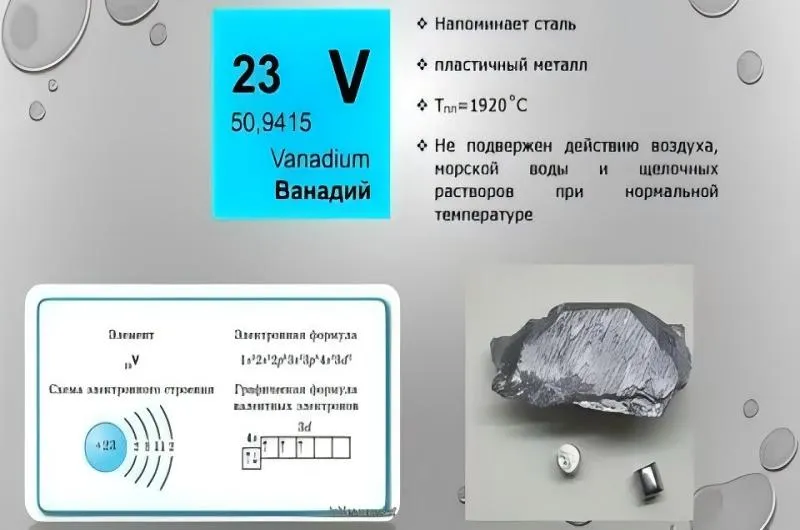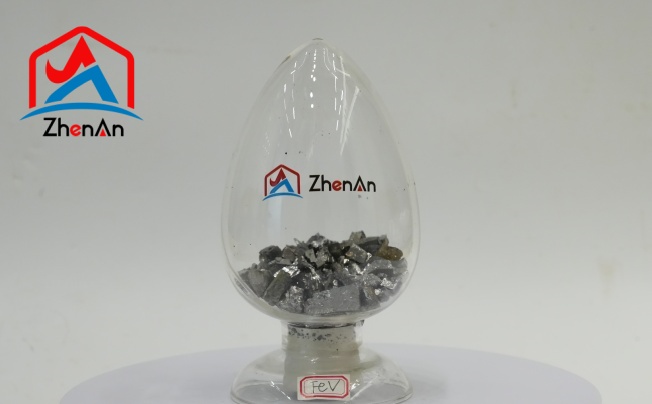BY  GENN
GENN
2024/12
Blog
What Are The Symptoms Of Low Vanadium?
Vivid and versatile, vanadium is a trace mineral that plays a crucial role in maintaining the intricate balance of our biological systems.
Fatigue and Weakness
Fatigue and weakness are commonly reported symptoms associated with low vanadium levels in the body. Vanadium plays a crucial role in energy production within our cells. One of its primary functions is to aid in the metabolism of carbohydrates, proteins, and fats, which are essential sources of energy for our bodies.
Without sufficient vanadium, the process of ATP synthesis, the key molecule for cellular energy transfer, can be compromised. As a result, individuals with low vanadium levels may experience feelings of persistent fatigue and overall weakness.
Furthermore, the impact of low vanadium on ATP synthesis and cellular function extends beyond just energy production. ATP (adenosine triphosphate) is often referred to as the “energy currency” of cells because it provides the energy necessary for various cellular activities.
Inadequate levels of vanadium can disrupt this crucial process, leading to decreased efficiency in vital cellular functions such as muscle contraction, nerve signalling, and overall metabolism. Consequently, individuals with low vanadium levels may experience not only physical fatigue but also cognitive sluggishness due to compromised cellular activities.
Vanadium plays a pivotal role in insulin signalling and glucose regulation within the body. Insulin is a hormone produced by the pancreas that helps regulate blood sugar levels by facilitating glucose uptake into cells for energy production or storage.
Vanadium has been shown to mimic insulin’s actions by enhancing insulin sensitivity and promoting glucose uptake by cells. In essence, vanadium acts as a “glucose regulator,” ensuring that blood sugar levels remain stable within optimal ranges.
The effects of low vanadium on blood sugar levels can be profound and have implications for diabetes risk. Individuals with inadequate vanadium intake or absorption may struggle with maintaining proper blood glucose control, potentially leading to hyperglycemia (high blood sugar) or even insulin resistance over time.
Research suggests that optimizing vanadium levels through dietary sources or supplementation may help improve insulin sensitivity and mitigate diabetes-related complications in at-risk populations.
Cardiovascular Consequences of Vanadium Deficiency
Vanadium deficiency has been linked to a multitude of heart health issues, emphasizing the critical role this trace mineral plays in maintaining cardiovascular function.
Research suggests that vanadium is involved in regulating blood pressure, lipid metabolism, and overall heart muscle health. When vanadium levels are insufficient, individuals may experience an increased risk of developing hypertension, atherosclerosis, and other cardiovascular disorders. The connection between vanadium deficiency and cholesterol levels further underscores its importance for heart health.
Studies have shown that vanadium supplementation can help reduce LDL (bad) cholesterol levels while increasing HDL (good) cholesterol levels. By promoting a healthier lipid profile, vanadium may contribute to lowering the risk of heart disease and improving overall cardiovascular well-being.
Vanadium plays a crucial role in bone mineralization, highlighting its significance in maintaining optimal bone density and strength. Inadequate levels of vanadium can lead to impaired bone formation and mineralization processes, potentially increasing the risk of osteoporosis and fractures. This underscores the essential role vanadium plays in supporting skeletal health.
Research has indicated that low vanadium levels may disrupt the balance between bone formation and resorption, leading to decreased bone mass over time. This imbalance can compromise bone integrity and increase susceptibility to fractures or other skeletal issues. Therefore, ensuring sufficient intake of vanadium through diet or supplementation is vital for preserving bone health and reducing the likelihood of osteoporosis-related complications.
Rarely Known Symptoms of Low Vanadium Levels
The Gastrointestinal Impact of Vanadyl Sulfate
Vanadyl sulfate, a popular form of vanadium used in dietary supplements, is often touted for its potential health benefits. However, what many do not realize is that this compound can also have adverse effects on the gastrointestinal system.
Individuals supplementing with vanadyl sulfate may experience uncomfortable symptoms such as diarrhea, gas, and bloating. These side effects can be quite distressing and may lead some individuals to discontinue the use of vanadyl sulfate despite its potential health-promoting properties.
The mechanism behind the gastrointestinal issues caused by vanadyl sulfate is not entirely understood. It is believed that the high concentration of vanadium in this form may disrupt the normal functioning of the gut microbiota, leading to digestive disturbances.
Additionally, vanadium has been shown to interfere with certain enzymes involved in digestion, further exacerbating gastrointestinal symptoms. It is crucial for individuals considering vanadyl sulfate supplementation to be aware of these potential side effects and consult with a healthcare provider if they experience any discomfort.
The Alarming Link Between Vanadium and Lung Cancer
While vanadium is an essential trace mineral that plays a vital role in various physiological processes, excessive exposure to high levels of this element can have serious consequences on health. One rarely known risk associated with chronic low vanadium levels is the potential development of lung cancer.
Studies have suggested that prolonged inhalation or ingestion of elevated levels of vanadium particles can lead to lung damage and increase the risk of developing cancerous growths within the respiratory system. The carcinogenic properties of vanadium are thought to stem from its ability to generate reactive oxygen species (ROS) within lung tissues, causing oxidative stress and DNA damage that may trigger tumorigenesis.
Moreover, chronic inflammation induced by persistent exposure to high levels of vanadium further compounds the risk for lung cancer development. This underlines the importance of maintaining balanced vanadium levels in both occupational settings with potential exposure risks and general environmental contexts to safeguard respiratory health.
Navigating Risks: Balancing Benefits and Potential Harm
In light of these rarely known symptoms and risks associated with low or excessive levels of vanadium intake, it becomes imperative for individuals to approach supplementation or dietary sources mindfully. While small amounts of dietary vanadium are generally safe for most people, it’s crucial not to exceed recommended doses or rely solely on supplements without medical guidance due to potential side effects like gastrointestinal distress from compounds such as vanadyl sulphate.
Furthermore, those working in industries where airborne exposure to high concentrations of vanadium particles is a concern should prioritize implementing appropriate safety measures like respiratory protection equipment and regular monitoring for occupational hazards. By striking a balance between reaping the benefits offered by optimal levels of this trace mineral while mitigating undue risks associated with overexposure or deficiency scenarios, individuals can better safeguard their overall well-being and long-term health outcomes.












